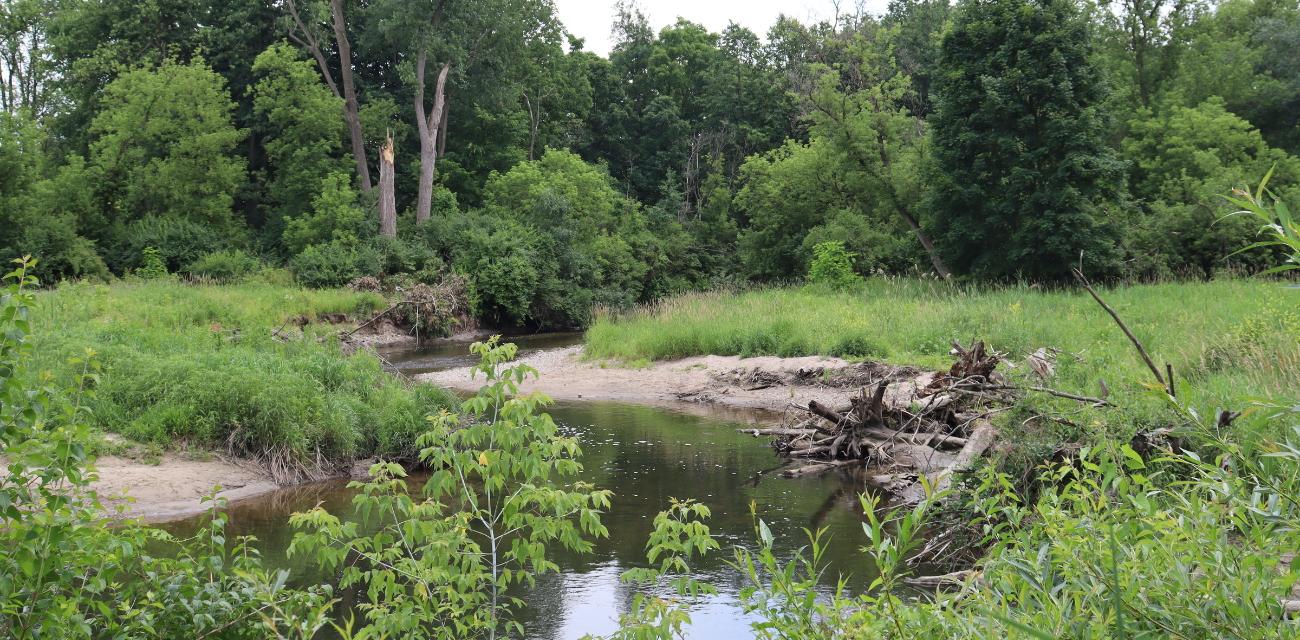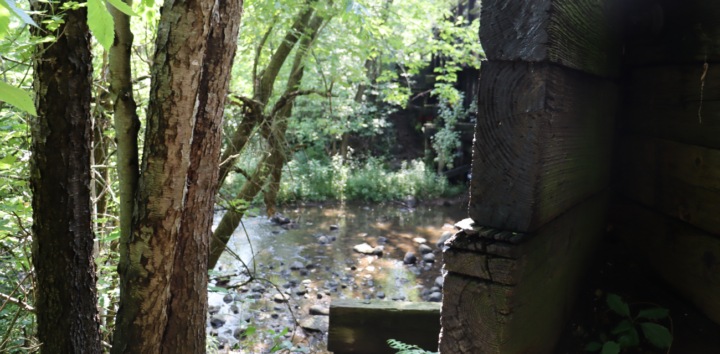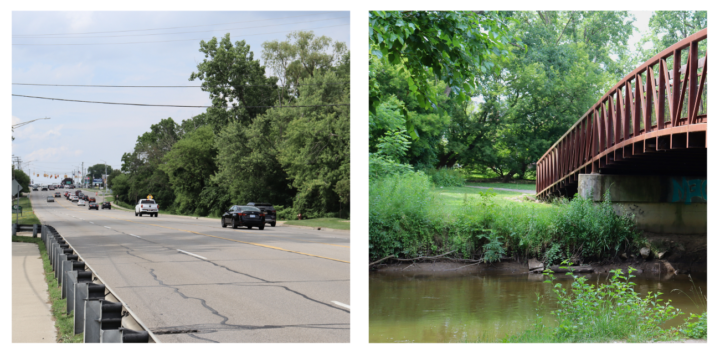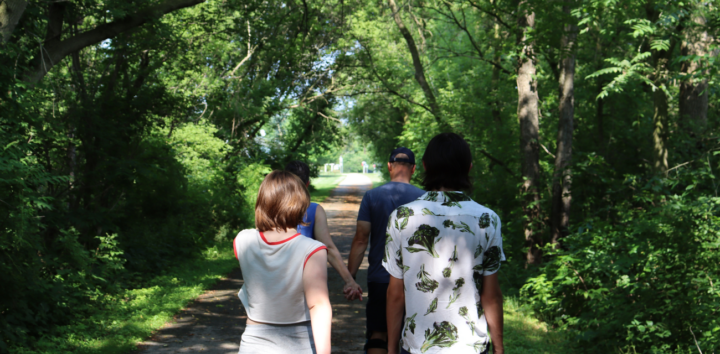From dead zone to life abound: The Clinton River watershed

Authored by
Michigan’s most populous watershed stays resilient through struggle
Travel around southeast Michigan’s Clinton River watershed long enough and it may seem as if the local leaders of old had tried to hide away its lakes, streams and wetlands.
Major roads cross over the Clinton River from top to bottom, but it’s hard to notice you’re traveling on bridges, let alone over water. In Pontiac, the Clinton River disappears 30 feet below ground in a culvert. Sprawling strip malls and subdivisions don’t seem like places sprawling nature naturally exists in.
If concealment actually was the intent of the top brass of Metro Detroit and its hinterlands, though, their plans were certainly foiled.
Now, signs proudly display which water bodies drivers cross over. Pull up a map and parks, preserves and public spaces add thick strips of green alongside the Clinton Rivers’ blue. Residents and visitors paddle, fish, boat and otherwise relax on or near the water across dozens of cities and towns.
What once was a watershed of shame has become one of pride. What once seemed hidden is being celebrated. At the center of this success is the Clinton River Watershed Council, or CRWC.

Headwaters
Cole Pachucki loves to cycle, hike and otherwise get out into nature. He picked it right back up when he moved into the Clinton River watershed a few years ago.
Now, as the development and communication manager for the CRWC, he helps the 1.4 million residents within the watershed learn about and enjoy its waters, just like he does.
While Pachucki’s time with the nonprofit is fairly short, he said the change in peoples’ perceptions over its 52-year history is large.
“We have board members now who reference their experience knowing that the Clinton River wasn’t somewhere that you knew to recreate in,” Pachucki said. “Your parents told you to stay away from the Clinton. ‘It’s dirty. If you go in you’ll get sick. There’s stuff to hurt yourself on in there.’”
The board members’ parents had good reason to be so cautious.
The thing about a watershed is that everything flows downward. At its headwaters in the rural southern Thumb, fertilizers and manure leaked into creeks, streams and groundwater. In suburban Macomb and Oakland counties, stormwater slalomed along the asphalt and concrete, picking up trash, oil and other undesirables. At the heart of the watershed, industries dumped their waste directly into water.
Animal poop, stormwater, industrial waste—it all accumulated as water flowed from the top of the watershed to its bottom in Lake St. Clair, creating a dangerous soup of chemicals that threatened wildlife and human users of the water.
These problems still persist today, Pachucki said, but the tipping point was in the 1960s, when a scientific survey found no living fish in the dozens of miles of the Clinton River between Pontiac and Lake St. Clair. Part of the watershed was subsequently designated as a federal Area of Concern, which came with specific, community-centered criteria to clean up the river and reconnect it to the ecosystems and people within it.
This became a catalyst for the CRWC’s formation in 1972. The work it and its partners have done since have turned those board members, once avoidant of the Clinton River, into ardent supporters.

The watershed’s mouth
When Pachucki speaks about the ways in which his organization has protected, enhanced and celebrated its namesake over the past 52 years, those methods center around two words.
First, watershed. Every part of it—from a drain to a large wetland to the land around them both—is interconnected. To best serve any part of the watershed, the watershed in whole must be served.
Second, council.
“We couldn’t just do it with staff and volunteers,” Pachucki said. “It takes a dedicated effort of stakeholders across the watershed, from local governments to state legislators to private companies to residents—everybody working together to make meaningful strides toward improving and maintaining a healthy watershed.”
This approach becomes clear in the various programs of the CRWC.
In order to remove its Area of Concern designation, the nonprofit, citizens, government leaders and on-the-ground workers remediate the river of contaminated sediments, chemicals and abundant nutrients.
One hundred volunteers monitor the progress of lakes and streams’ water quality as this work is done, taking samples and counting macroinvertebrates like caddisflies, which are indicators of a healthy ecosystem. These findings will soon be published on a public data dashboard as a way to measure progress and make further decisions.
The CRWC even gives microgrants to municipalities within watershed boundaries to assist in building green infrastructure and water-focused community projects.
Not only is science and action critical. So is education and appreciation.
“We want to encourage stewardship of our water resources, and our first step is making sure people can have fun outside,” Pachucki said. “Sometimes that’s really hard to do because there’s barriers to entry for almost every outdoor hobby.”
Programs like Nourished by Nature host friendly hiking, kayaking, camping, paddling, birding and other recreational activities, often for only a few dollars at most. Trash pickups give folks a clear way to see the impact they’re making on their neighboring lakes and streams. Even the CRWC’s location is meant to stimulate: its backyard is the Avon Nature Area.
The results of welcoming, watershed-wide work has resulted in a place that feels entirely different from the mid-20th century.
“I think that 50 years ago, no one could have imagined that the Clinton River is in as good a shape as it’s in right now,” Pahucki said. “It’s made so much progress.”
Take the stretch of the Clinton River once devoid of fish. It now has 84 species and counting. Or one of the river’s tributaries, Plumbrook Drain, in Macomb County, one of the most historically polluted water bodies in the watershed. A while back, volunteers found a mussel in it, which must have good water quality to survive.
Pachucki said it’s tough to visualize what the Clinton River watershed looks like 50 years from now, but it comes down to more stories like those above: more fish, more macroinvertebrates, more recreation and more appreciation.

Discover
Power environmental change today.
Your gift to the Michigan Environmental Council is a powerful investment in the air we breathe, our water and the places we love.
Sign up for environmental news & stories.
"*" indicates required fields




